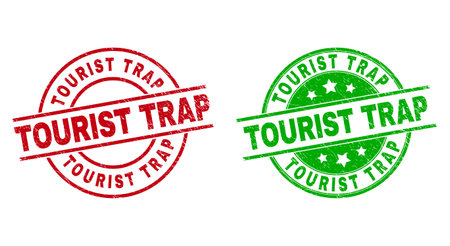1. Understanding Adventure and Extreme Sports Travel Insurance
If you’re an adrenaline junkie or just love pushing your limits while traveling, regular travel insurance might not be enough for you. That’s where adventure and extreme sports travel insurance comes in. This special type of coverage is designed specifically for people who plan to participate in high-risk activities during their trips in the US.
What Does Adventure and Extreme Sports Travel Insurance Cover?
This insurance goes beyond what standard policies offer. Here’s a look at what it typically covers:
| Coverage Type | Standard Travel Insurance | Adventure/Extreme Sports Insurance |
|---|---|---|
| Medical Expenses from Accidents | Basic injuries, illness | Covers injuries from sports like skiing, rock climbing, surfing, mountain biking, skydiving, etc. |
| Evacuation & Rescue | Limited or not included | Covers helicopter rescue and emergency evacuation from remote locations |
| Equipment Loss or Damage | Not usually included | Covers loss/theft/damage of specialized gear (like surfboards, climbing ropes) |
| Trip Cancellation/Interruption | General reasons only | Covers cancellations due to injury from an extreme sport activity |
Why Is It Necessary for Thrill-Seekers?
If you’re into activities like snowboarding in Colorado, white-water rafting in West Virginia, or skydiving in California, your risk of getting hurt is higher than average travelers. Hospitals and medical evacuation can cost thousands of dollars in the US—especially if you’re far from a major city. Regular travel insurance often excludes “hazardous activities,” which means you could end up paying these costs out-of-pocket without the right policy.
Examples of Covered Activities
- Bungee jumping
- Skiing and snowboarding (including off-piste)
- Rock climbing and mountaineering
- Dirt biking and ATV riding
- Scuba diving (up to certain depths)
- Paragliding and skydiving
How Is It Different from Standard Travel Insurance?
The main difference comes down to risk. Standard travel insurance is meant for the everyday traveler—think sightseeing, city tours, or business trips. Once you add risky sports or adventures to your itinerary, most regular plans will either exclude those activities or require you to pay extra for an upgrade.
| Standard Policy | Adventure/Extreme Sports Policy | |
|---|---|---|
| Cost | Lower premiums | Slightly higher premiums due to increased risk |
| Covered Activities | No or few hazardous activities covered | Covers a wide range of adventure/extreme sports (check each policy for details) |
| Payout Limits for Injuries/Rescue | Lower limits or exclusions for risky activities | Higher limits tailored to sport-related incidents and rescues |
If your trip involves adventure sports in the US, having the right travel insurance means you can focus on the thrill—not the risks.
2. Popular Adventure and Extreme Sports in the US
When it comes to adventure and extreme sports, Americans have a real love for pushing limits and exploring the great outdoors. Whether youre planning an epic vacation or just curious about whats out there, its important to know which activities are most popular—and which ones you might need special travel insurance for. Here’s a look at some of the top adventure activities and extreme sports in the US.
Most Common Adventure Activities
| Activity | Where Its Popular | Risk Level |
|---|---|---|
| Hiking | National Parks (Yosemite, Grand Canyon, Appalachian Trail) | Moderate |
| Rock Climbing | Red River Gorge (KY), Joshua Tree (CA), Boulder (CO) | High |
| Skiing & Snowboarding | Colorado Rockies, Utah, Lake Tahoe, Vermont | High |
| Surfing | California, Hawaii, Florida | Moderate to High |
| Skydiving | Nevada, Florida, Arizona, California | Very High |
Hiking Adventures
The US has thousands of miles of hiking trails for every skill level. From the scenic Pacific Crest Trail to the rugged terrains of Zion National Park, hiking is accessible but can still come with risks like sprains or altitude sickness.
Rock Climbing Hotspots
If you love a vertical challenge, rock climbing is huge in places like Yosemite Valley and Red River Gorge. This sport requires not just strength but also safety awareness due to falls or equipment failure.
Skiing and Snowboarding Destinations
The winter months bring millions to slopes in Colorado and Utah. Skiing and snowboarding are thrilling but come with a higher risk of injuries like fractures or concussions—making good insurance a must.
Catching Waves: Surfing
The US boasts world-famous surf spots from Malibu to Oahu’s North Shore. While surfing is exhilarating, strong currents and wipeouts can lead to injuries that may require medical attention.
The Thrill of Skydiving
Skydiving is as extreme as it gets. Whether you’re jumping over the deserts of Arizona or the beaches of California, this activity offers a rush like no other—but it’s essential to understand that it carries significant risk.
Why Insurance Matters for These Activities
No matter which adventure calls your name, participating in these sports means accepting some risk. Standard travel insurance often excludes injuries from extreme sports, so it’s important to look for plans that specifically cover these activities.

3. Key Features to Look for When Choosing Coverage
If you’re planning an adventure or extreme sports trip in the US, picking the right travel insurance is crucial. Not all travel insurance policies are created equal—especially when it comes to covering high-risk activities like rock climbing, mountain biking, whitewater rafting, or backcountry skiing. Here’s a breakdown of the most important features to check before you buy.
Medical Evacuation
Adventure sports often take you far from hospitals and medical care. Medical evacuation coverage pays for emergency transport if you’re injured in a remote area. This can include helicopter airlifts or ambulance transfers to the nearest adequate medical facility. Look for policies with generous coverage limits (at least $100,000) and worldwide assistance services.
Search and Rescue
If you get lost or stranded while hiking, skiing, or participating in other outdoor sports, search and rescue operations can be extremely expensive. Some insurance plans cover these costs, which may include helicopter searches, rescue teams, or even K-9 units. Double-check that this benefit is included and note any coverage limits.
Equipment Protection
Your gear is essential for your adventures—and replacing it can be costly if it’s lost, stolen, or damaged. Equipment protection helps reimburse you for loss or damage to sports equipment such as bikes, skis, surfboards, climbing gear, or cameras. Make sure the policy covers both checked and carry-on items and check what documentation is required for claims.
| Feature | What It Covers | Typical Limits/Notes |
|---|---|---|
| Medical Evacuation | Emergency transport from accident site to hospital | $100k–$500k; verify destination coverage |
| Search & Rescue | Costs of locating and rescuing you in emergencies | $10k–$25k; often requires pre-authorization |
| Equipment Protection | Reimbursement for lost/damaged sports gear | $1k–$5k/item; receipts usually required |
| Trip Cancellation/Interruption | Covers non-refundable costs if you cancel/interrupt your trip due to covered reasons (like injury) | Up to 100% of prepaid trip cost; check covered reasons list |
| Coverage Limitations | Exclusions on certain activities/equipment types or injuries from risky behavior | Read the fine print; some sports may need special add-ons |
Trip Cancellation and Interruption
If your adventure gets cut short by injury, illness, severe weather, or other unforeseen circumstances, trip cancellation and interruption benefits help recover non-refundable expenses like flights, lodging, tours, or permits. Check which specific reasons are covered—for example, some plans might exclude cancellations due to pre-existing conditions or certain weather events.
Coverage Limitations and Exclusions
This is where many travelers get caught off guard. Not every insurance plan covers every sport—some consider activities like skydiving or scuba diving as “hazardous” and may exclude them unless you purchase extra coverage. Also look out for exclusions related to alcohol use, reckless behavior, or competitions.
Commonly Excluded Activities:
- B.A.S.E. jumping/li>
- Professional-level competitions/li>
- Caving/li>
- Paragliding without certification/li>
- Skiing off-piste without a guide/li>
Tips for Choosing the Right Policy:
- Make a list of all planned activities—confirm each one is covered.
- Compare coverage limits side-by-side.
- If bringing expensive gear, check individual item limits.
- Ask about add-ons for excluded sports if needed.
Selecting the right adventure and extreme sports travel insurance means paying close attention to these key features so you can focus on your next big thrill with peace of mind!
4. Top US-Based Travel Insurance Providers for Adventure Seekers
If you’re planning an adrenaline-filled trip, picking the right travel insurance is crucial. Not all insurers cover activities like rock climbing, scuba diving, or backcountry skiing by default, so it’s important to choose a provider with specialized adventure and extreme sports policies. Here are some of the most reputable US-based companies that cater to thrill-seekers:
Leading Adventure Sports Insurance Companies in the US
| Insurance Provider | Key Adventure Coverage | Notable Features | Contact/Website |
|---|---|---|---|
| World Nomads | Wide range of adventure sports including mountain biking, snowboarding, scuba diving (up to depth limits), surfing, and more | Covers over 200 adventure activities; easy online claims; 24/7 emergency assistance | worldnomads.com |
| IMG (International Medical Group) | Skiing, snowboarding, hiking above standard altitudes, motorcycling, zip lining, and others with optional add-ons | Customizable plans; strong medical evacuation coverage; optional hazardous activity rider | imglobal.com |
| Travelex Insurance Services | Certain extreme sports and adventure activities as optional upgrades on select plans | User-friendly plan builder; kids under 18 often free with adult policy; 24/7 customer service | travelexinsurance.com |
| Travel Guard (AIG) | Bungee jumping, heli-skiing, scuba diving, parasailing (with optional Adventure Sports Bundle) | Wide network of support; customizable add-ons; solid reputation in US market | travelguard.com |
| Berkshire Hathaway Travel Protection (BHTP) | Adventure sports covered with specific plan options; includes sporting equipment loss/delay benefits | Fast claims processing; mobile app; no age limit on certain plans | bhtp.com |
How to Compare Adventure Travel Insurance Plans
- Check Activity Inclusions: Make sure your planned sport or activity is listed—some policies exclude “extreme” activities unless you purchase an extra rider.
- Medical & Evacuation Limits: Look at how much the insurer will pay for injuries or rescue operations. Remote adventures can mean high evacuation costs.
- Gear Protection: If you’re bringing expensive equipment like cameras or skis, see if the plan covers lost or damaged gear.
- Trip Cancellation/Curtailment: Does the plan reimburse you if your adventure is cut short due to weather or injury?
- User Experience: Check reviews for claim speed and customer service—helpful when you need urgent support from abroad.
- Add-On Flexibility: Some providers offer extra coverage for unique sports or higher-risk adventures—perfect if your trip involves something out of the ordinary.
Pro Tip: Read the Fine Print!
No two policies are exactly alike. Always read the policy documents carefully before buying. Look for lists of covered activities and any exclusions related to professional competition, altitude limits, or equipment use. If in doubt, call the insurance company and ask about your specific plans.
5. Tips for Making a Claim and Staying Safe
Document Your Adventure Activities
If you plan on participating in adventure or extreme sports during your trip, its essential to keep detailed records of your activities. Many insurance companies in the US require proof of participation and evidence of any incidents that lead to a claim.
What to Document:
- Receipts for equipment rentals and activity bookings
- Photos or videos of yourself participating in the activity
- Signed waivers or registration forms from tour operators
- Contact information for guides, instructors, or witnesses
- Date, time, and location details of each activity
Information to Prepare in Advance
Getting organized before your trip can save you stress if something goes wrong. Here’s a checklist to help you be ready:
| Item | Why You Need It |
|---|---|
| Policy Number & Emergency Contacts | Quick access in case of an emergency |
| Copies of Your Insurance Policy | Know exactly what’s covered and excluded |
| ID and Passport Copies | Required for identity verification during claims process |
| Medical Records (if applicable) | Important if you have pre-existing conditions or need treatment abroad |
| Receipts/Proof of Payment for Activities | Makes it easier to prove participation and losses |
Common Exclusions You Should Know About
Adventure and extreme sports travel insurance often comes with exclusions. Understanding these ahead of time can help you avoid disappointment when making a claim.
- No Coverage Without Proper Safety Gear: If you skip helmets, harnesses, or other recommended equipment, your claim could be denied.
- No Coverage for Reckless Behavior: Acting under the influence of drugs or alcohol usually voids your policy.
- Certain Sports May Be Excluded: Activities like BASE jumping or professional-level competitions might not be covered.
- No Coverage for Unapproved Operators: Always use licensed guides and companies recognized by your insurer.
- No Coverage Outside Approved Locations: Stick to approved areas—off-limits zones may not be insured.
How to Increase the Chances of a Smooth Claims Process
- Report Incidents ASAP: Contact your insurer as soon as possible after an incident. Most US providers have 24/7 hotlines.
- Keep All Documentation: Save emails, receipts, medical reports, police reports, and photos related to the incident.
- Follow Up Regularly: Track your claim’s progress by following up with your provider. Keep records of all communications.
- Be Honest and Detailed: Provide accurate, thorough information when filing your claim to avoid delays or denials.
- Avoid Gaps in Information: Missing details can slow down the process—double-check all forms before submitting.
If You Need Emergency Help While Traveling:
- Call 911 in the US for urgent emergencies.
- If outside cell service, alert park rangers or local authorities immediately.
- Your travel insurer’s emergency number should always be handy—store it in your phone and on paper just in case.
Your Adventure Awaits—Stay Prepared!
The thrill of adventure sports is unbeatable, but a little preparation ensures you’re protected if things go sideways. With good documentation and knowledge of your policy, you’ll enjoy peace of mind wherever your journey takes you.


